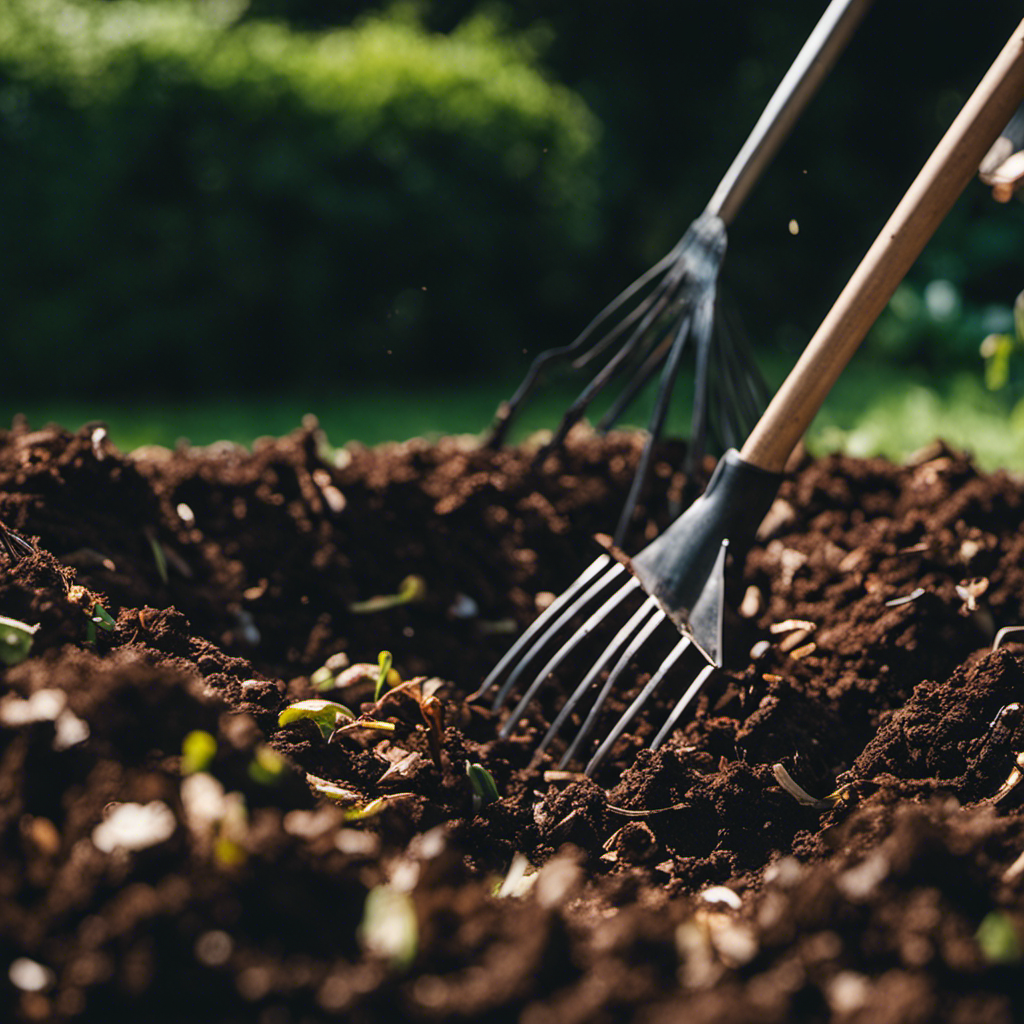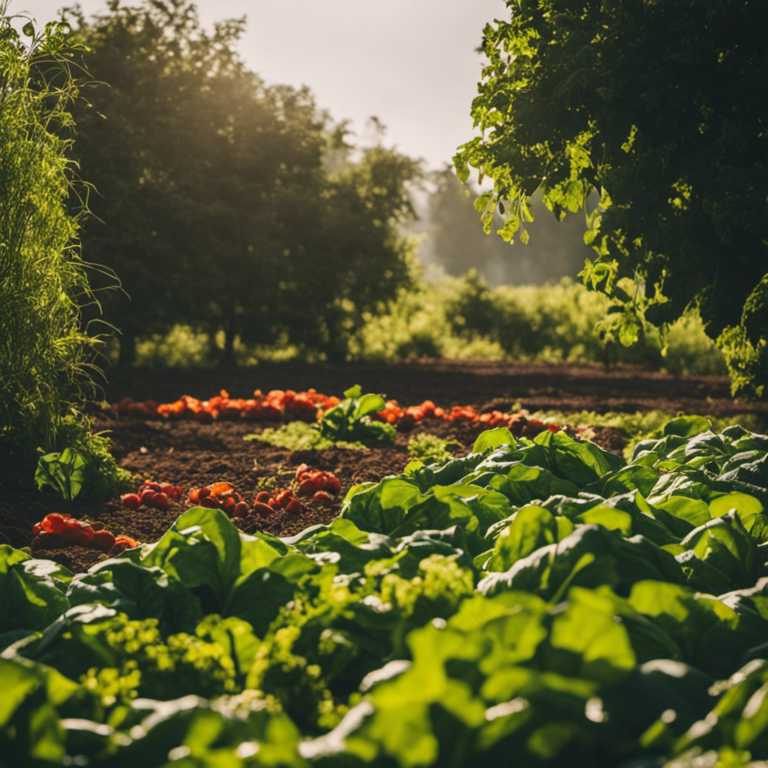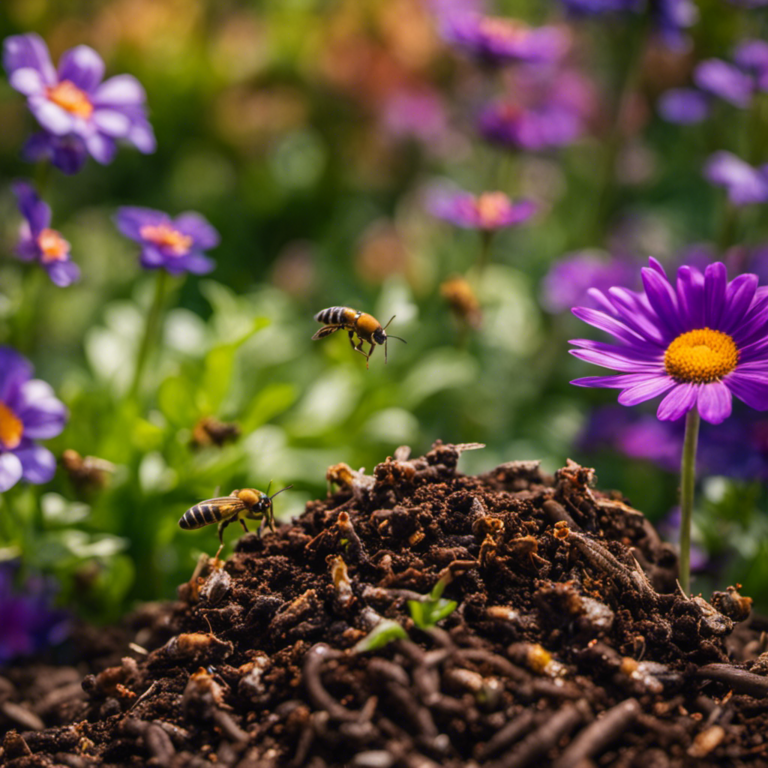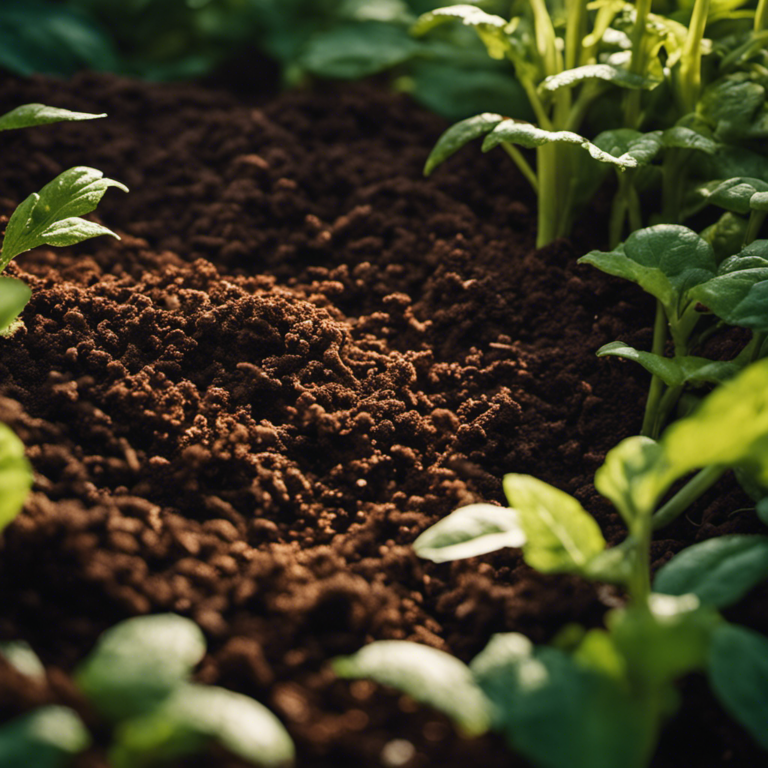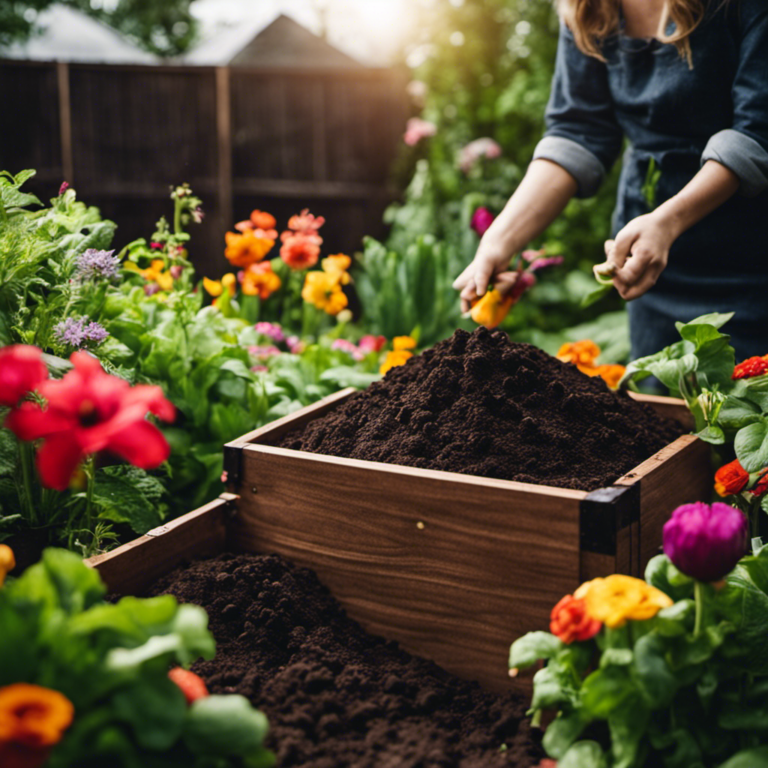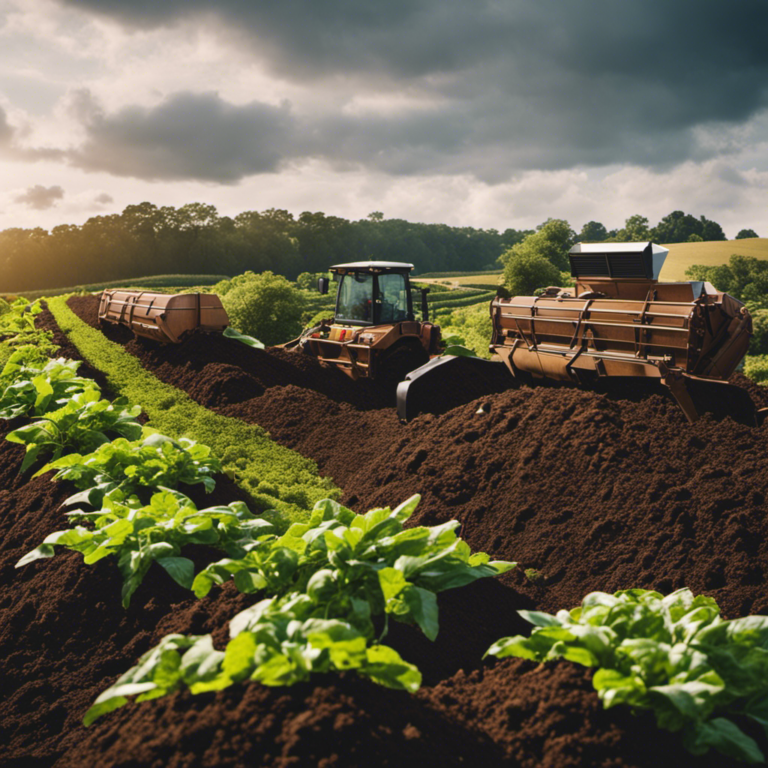I’m here to share with you my step-by-step guide on composting at home for organic gardens. This guide will help you create nutrient-rich soil that will make your garden thrive.
Let’s start by selecting the right composting container and mastering layering techniques.
By understanding the ideal moisture and temperature, as well as the importance of turning and mixing, you can speed up the breakdown process.
Get ready to embark on a journey to a greener, more sustainable garden!
Key Takeaways
Composting at home is a practical and effective way to create organic gardens. By choosing the right composting container and selecting the best organic materials, you can create nutrient-rich soil for your plants.
To start composting, you’ll need a composting container that allows for proper aeration and drainage. Look for containers made of recycled materials or consider building your own using materials like wood or wire mesh. This will help create a suitable environment for the decomposition process.
Next, gather organic materials such as kitchen scraps (like fruit and vegetable peels), yard waste (like leaves and grass clippings), and shredded paper or cardboard. These materials will provide the necessary carbon and nitrogen for the composting process.
Layering techniques are important for effective decomposition. Alternate layers of green materials (like kitchen scraps and fresh grass clippings) with brown materials (like dry leaves and shredded paper). This will help create a balanced mix of carbon and nitrogen, promoting decomposition.
Maintaining the ideal moisture and temperature is crucial for successful composting. The compost pile should be kept moist, similar to a damp sponge, but not too wet. Regularly check the moisture level and add water if needed. Turning and mixing the compost regularly will help aerate the pile and speed up the breakdown process.
Composting has numerous benefits for your garden. It improves soil structure, enhances nutrient availability, and reduces the need for synthetic fertilizers. Plus, it’s an environmentally friendly way to recycle organic waste.
So why not start composting today? With a little effort, you can create nutrient-rich soil and experience the satisfaction of growing healthy, thriving plants in your own backyard. Give it a try and see the difference it makes in your garden.
Selecting the Right Composting Container
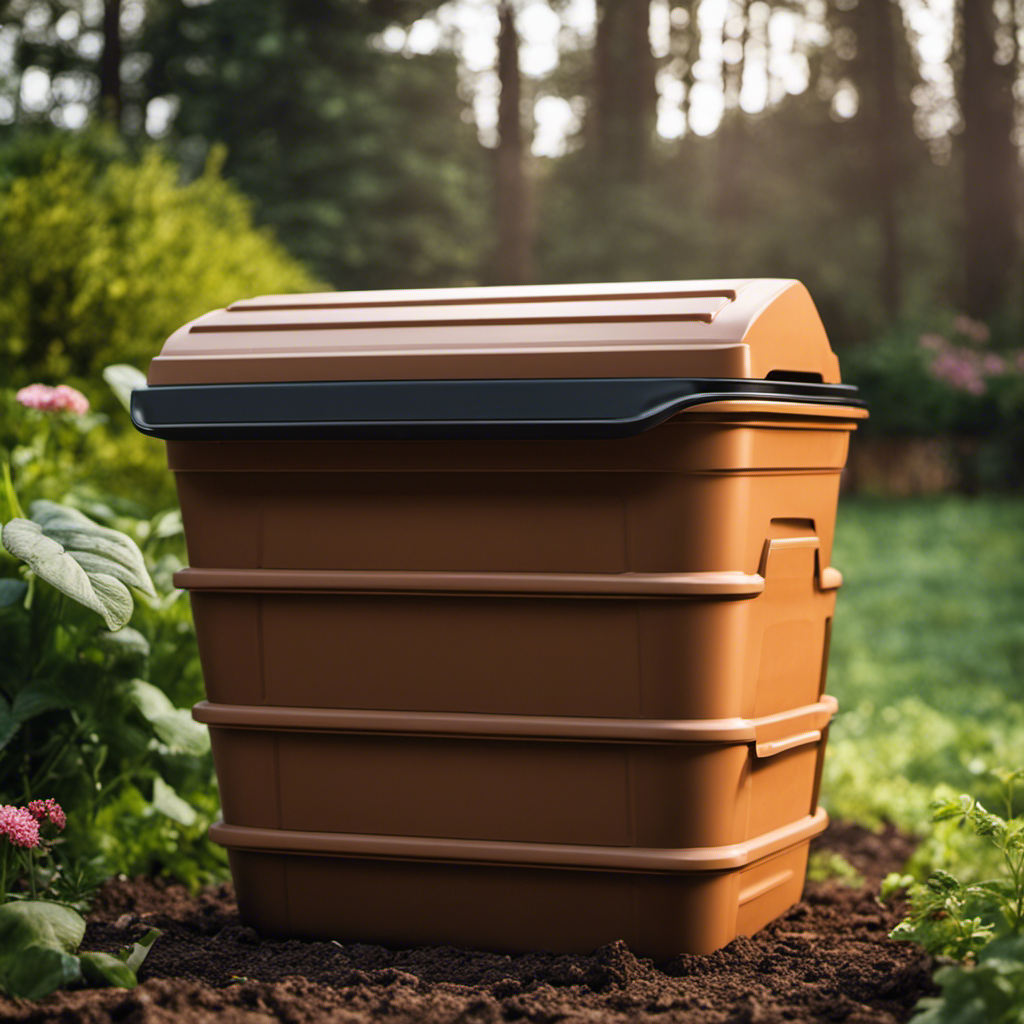
Selecting the right composting container involves considering the size, materials, and functionality of the container to ensure optimal composting for your organic garden. Using a composting bin offers several benefits for your garden.
First, it helps to reduce waste by providing a designated space for compostable materials such as kitchen scraps and yard waste. This not only reduces the amount of waste that ends up in landfills but also helps to create nutrient-rich soil for your plants. Additionally, using a composting bin helps to control odors and prevents pests from accessing the compost pile.
For those with limited space, there are tips for composting in small areas. One option is to choose a compact composting bin that fits well within the available space. There are many options available, including countertop composting bins and small-scale worm bins. These containers are designed to efficiently break down organic materials and fit well in small kitchens or balconies.
Another option is to utilize vertical space by using a compost tumbler or a stacked bin system. These containers allow for composting in a vertical manner, making them ideal for small gardens or apartments with limited outdoor space.
Selecting the right composting container is crucial for successful composting in your organic garden. Considering factors such as size, materials, and functionality will ensure that you can enjoy the benefits of using a composting bin and effectively compost even in small spaces.
Choosing the Best Organic Materials
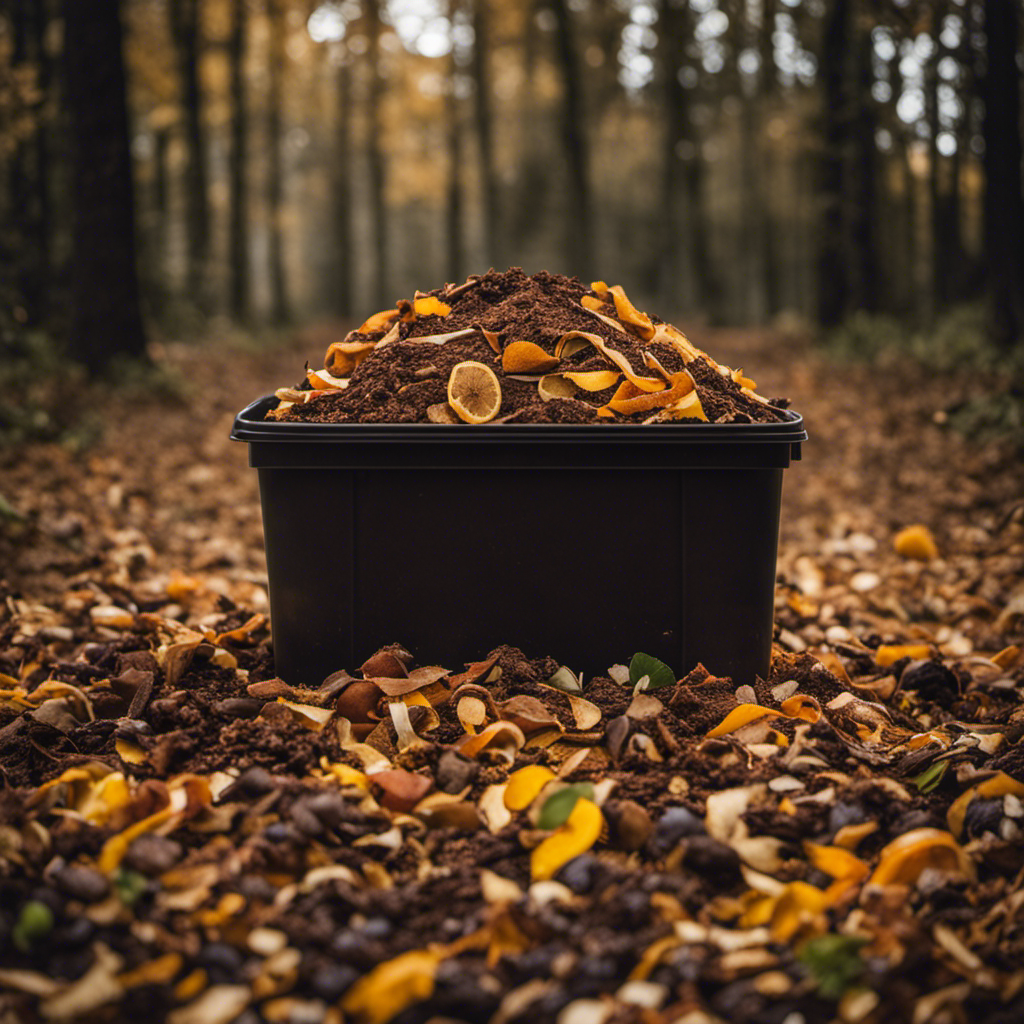
Choosing the Best Organic Materials for Composting
Creating nutrient-rich compost for an organic garden requires careful selection of organic materials. The right materials not only provide essential nutrients but also contribute to a healthy and balanced compost pile. Here are four key factors to consider when choosing organic materials for composting:
-
Carbon-rich materials (browns): These include dry leaves, straw, wood chips, and shredded newspaper. Browns provide the necessary carbon that promotes proper aeration in the compost pile and helps prevent unpleasant odors.
-
Nitrogen-rich materials (greens): Kitchen scraps, grass clippings, and fresh plant trimmings are examples of greens. These materials supply the nitrogen needed for microbial activity and decomposition.
-
Avoid meat, dairy, and oily foods: To maintain a healthy and efficient composting process, it’s best to steer clear of animal-based materials. These can attract pests and create unpleasant odors. Stick to plant-based materials instead.
-
Shred or chop materials: Breaking down larger organic materials into smaller pieces accelerates the decomposition process and leads to faster compost creation. Shredding leaves or chopping branches are effective methods.
When composting, it’s important to avoid common mistakes such as adding diseased plants, invasive weeds, or plants treated with pesticides. These can introduce harmful pathogens or chemicals into your compost. Additionally, pet waste shouldn’t be included as it may contain parasites or harmful bacteria.
Layering Techniques for Effective Decomposition
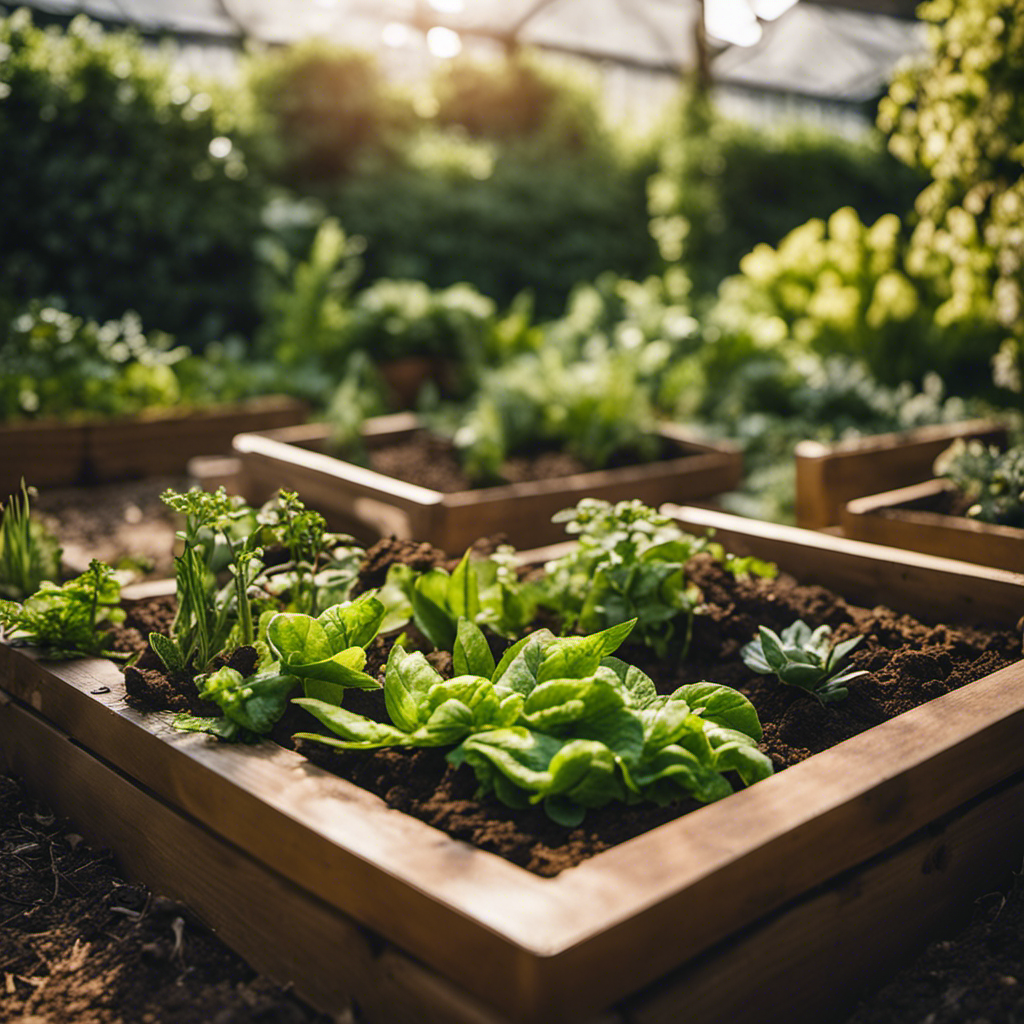
Layering Techniques for Effective Decomposition
When it comes to composting, choosing the right organic materials is just the first step. To ensure effective decomposition in your compost pile, it’s important to understand layering techniques. Properly layering your compost pile creates the ideal conditions for aerobic composting, which relies on oxygen to break down organic matter efficiently.
One effective layering technique is alternating green and brown layers. Green materials, such as grass clippings and kitchen scraps, are rich in nitrogen and provide the necessary nutrients for the decomposition process. On the other hand, brown materials like dried leaves and straw are high in carbon and help create air pockets that improve airflow.
To help you visualize the layering process, here is an example of the ideal ratio of green to brown materials:
- Green Materials: Grass clippings, vegetable scraps, coffee grounds, seaweed
- Brown Materials: Dried leaves, straw, wood chips, cardboard
Another layering technique worth considering is vermicomposting. This method involves using worms to aid in the decomposition process. Worms speed up decomposition and their castings, or worm manure, serve as excellent organic fertilizer. Vermicomposting offers numerous benefits, including increased nutrient availability, improved soil structure, and enhanced plant growth.
By understanding and practicing these layering techniques, you can ensure that your compost pile decomposes effectively, producing nutrient-rich compost for your organic garden.
Quote: ‘Composting is a simple yet powerful way to turn waste into valuable resources for your garden.’
Maintaining the Ideal Moisture and Temperature
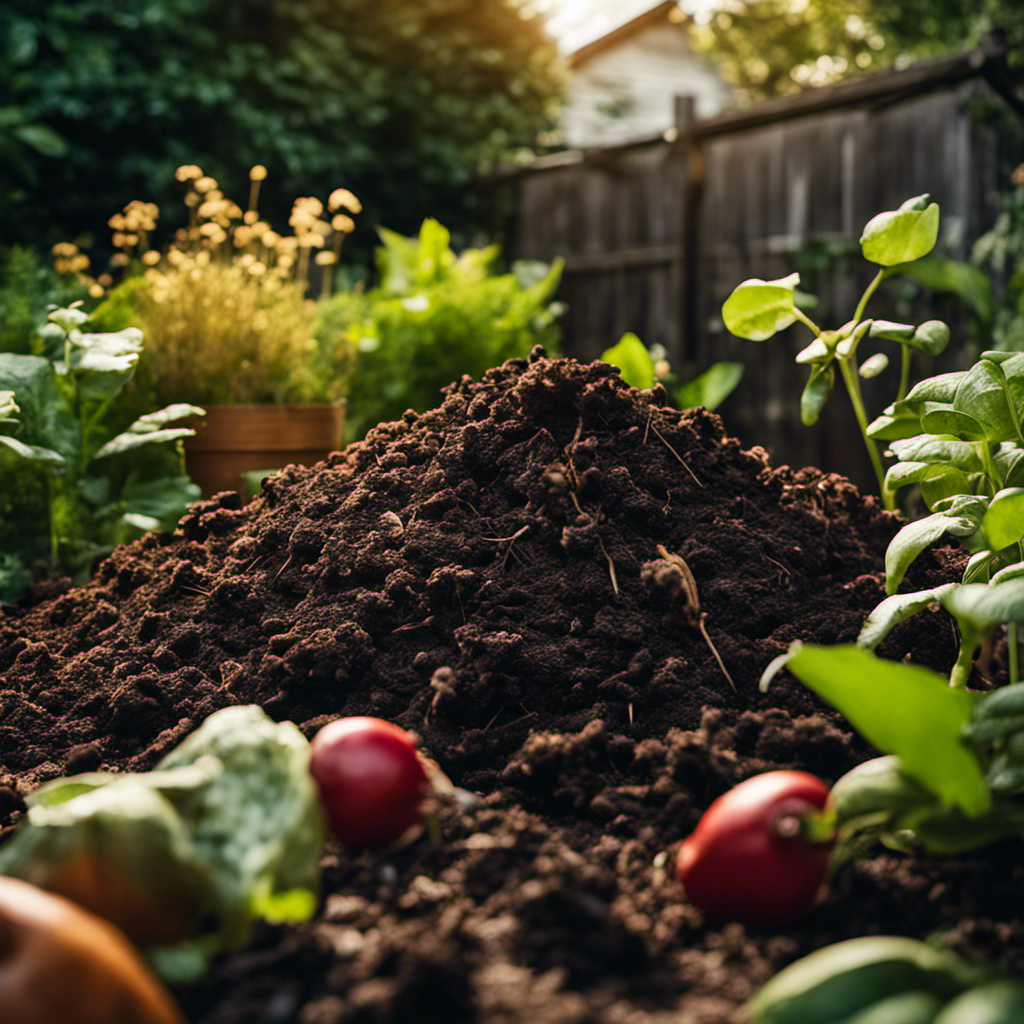
Maintaining the Ideal Moisture and Temperature
To ensure optimal moisture and temperature levels for your compost pile, it’s important to continuously monitor and adjust the conditions throughout the decomposition process. This will promote the growth and efficiency of beneficial microorganisms responsible for breaking down organic materials.
Here are some key steps to help you track progress and troubleshoot common issues:
-
Check moisture regularly: It’s crucial to maintain a moist compost pile, but avoid excessive wetness. To test the moisture content, simply squeeze a handful of compost. It should feel like a damp sponge, with some moisture present but not dripping water.
-
Turn the pile: Regularly aerating and evenly distributing the heat in the pile is essential. This prevents compaction and promotes decomposition. Aim to turn the pile every 1-2 weeks.
-
Adjust materials as needed: If your compost pile is too wet, add dry materials like straw, shredded newspaper, or dry leaves to absorb excess moisture. Conversely, if it’s too dry, add wet materials such as fruit and vegetable scraps or grass clippings to increase the moisture content.
-
Monitor temperature: The ideal temperature range for a compost pile is between 110-160°F (43-71°C). Use a compost thermometer to regularly check the temperature. If it’s too low, the decomposition process may slow down. On the other hand, if it’s too high, it can harm the beneficial microorganisms. Adjust the conditions accordingly.
Turning and Mixing for Faster Breakdown
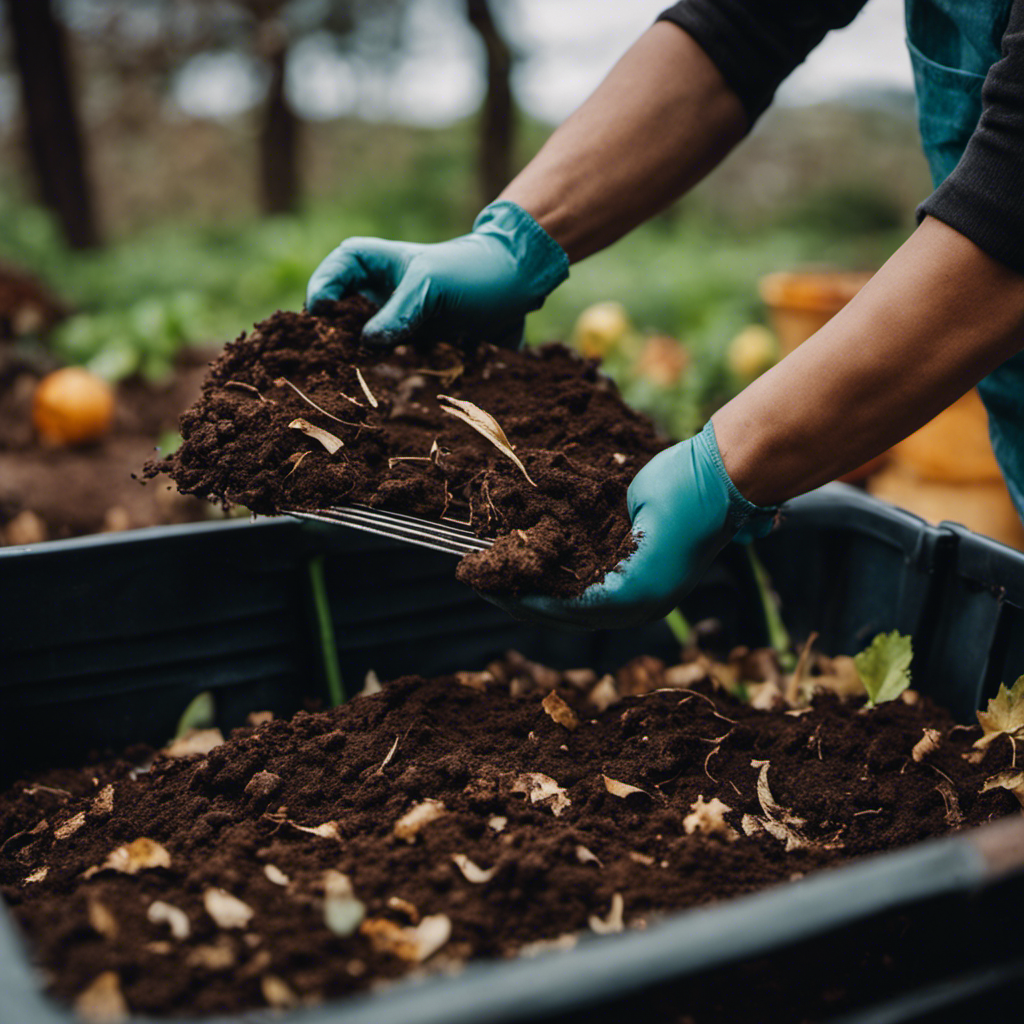
I regularly turn and mix my compost pile to help it break down faster. This step is essential in the composting process because it introduces oxygen into the pile.
Oxygen is crucial for decomposing organic materials and promoting the growth of beneficial bacteria and fungi. When I turn my compost pile, I make sure to mix all the materials thoroughly, which improves aeration and prevents compacted layers from forming.
I use a pitchfork or a compost turning tool to gently lift and mix the materials. It’s important not to turn the pile too often, as this can disrupt the natural decomposition process. Typically, I turn my compost pile every two to three weeks or when the temperature rises above 140°F (60°C).
Conclusion
Composting at home is a practical and effective way to create organic gardens. By choosing the right composting container and selecting the best organic materials, you can create nutrient-rich soil for your plants.
Layering techniques and maintaining the ideal moisture and temperature will ensure effective decomposition. It’s important to regularly turn and mix the compost for faster breakdown.
So why not start composting today and experience the amazing benefits for yourself? Imagine having lush, thriving gardens with minimal effort.
